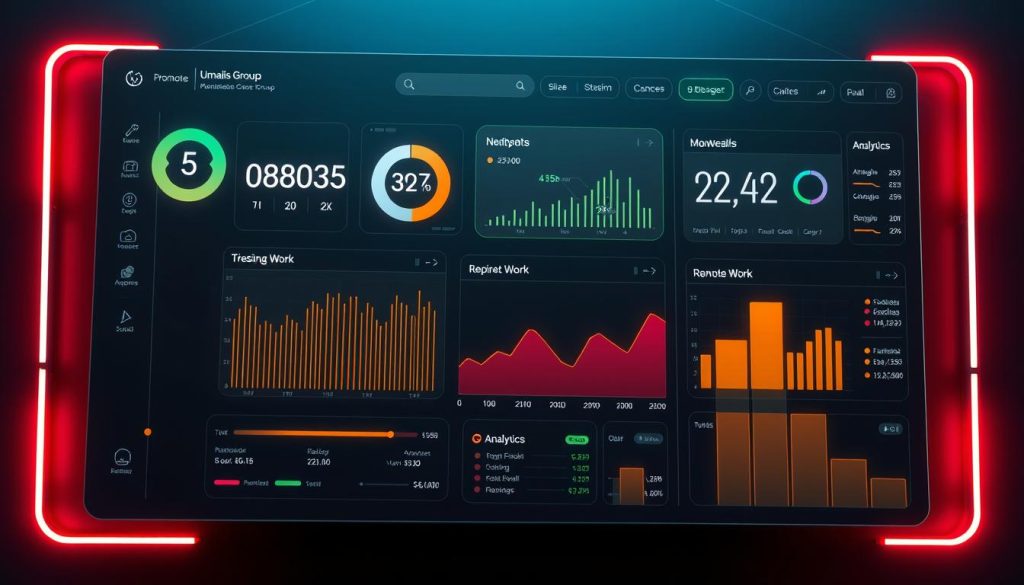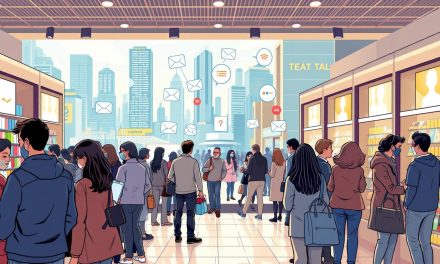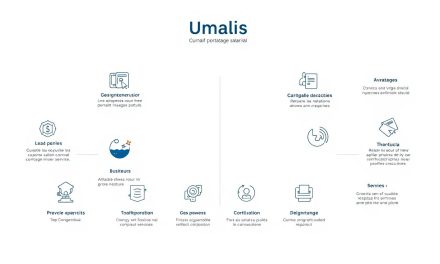The gig economy is changing how we work. It’s expected to have over 1.6 billion workers by 2025, making up 12% of the global workforce. This shift brings flexibility and independence to many jobs. To learn more, check out gig economy resources for a deeper dive.
Most gig workers love the freedom of independent work. They report being happier and feeling freer to choose their projects. We’ll look at the gig economy’s current state and future, including the rise of online platforms and AI tools.
Table of Contents
Key Takeaways
- The global gig workforce is projected to exceed 1.6 billion people by 2025, accounting for 12% of the total global labor market.
- 95% of independent workers report that AI tools have made them more productive and efficient.
- The gig economy is becoming more specialized with emerging niche platforms catering to specific industries and job types.
- Hybrid work models will allow gig workers to balance remote and in-office work, optimizing productivity and work-life balance.
- The online talent platforms are projected to contribute an additional $2.7 trillion to the global GDP by 2025.
- Gig workers typically do not receive benefits like health plans, retirement packages, or paid time off, highlighting the need for alternative support systems.
Understanding the Gig Economy Landscape
The gig economy is a big part of the global job market. Independent contractor growth has played a big role in its growth. It uses digital platforms to connect people and services.
A study by HRD Connect shows it’s a big change in how we work and find jobs.
Platforms like Uber, Airbnb, and Upwork are well-known. They are easy to use and offer many services. Remote work statistics show more people want flexible jobs. A survey found 79% of gig workers choose it for the flexibility.
The gig economy is growing fast. It’s expected to have over 1.6 billion workers by 2025. For more on freelancing platforms, check out Simulateur Portage Salarial.
The Rise of Remote Work in the Gig Economy
Remote work is now more popular than ever. Many people love the flexibility and freedom it offers. This change is part of the bigger on-demand labor trends that are reshaping how we work. As the gig economy expands, understanding remote work’s role is key.
The platform economy insights show remote work is more than a trend. It’s a major change in how we work. Digital platforms have opened up many job opportunities worldwide. This has boosted remote gig work, with workers seeking more flexibility and control.
Some key benefits of remote gig work include:
- Increased flexibility
- Reduced commuting time
- Improved work-life balance
These advantages are fueling the gig economy’s growth. More workers are choosing remote gig work for a better work-life balance.
As the gig economy keeps evolving, we’ll likely see more workers embracing remote gig work. With the right skills and support, workers can excel in this new environment. Businesses will also gain from the flexibility and agility remote gig work offers.
| Generation | Percentage of Freelance Workers |
|---|---|
| Gen Z | 15% |
| Millennials | 45% |
| Gen X | 27% |
| Baby Boomers | 9% |
Demographics of Gig Workers

The gig workers come from all walks of life, with different ages, genders, and skills. Self-employment statistics show the gig economy is booming. More people are choosing gig work as their main job. This is thanks to the shared economy developments that offer new chances to work on your own terms.
Some interesting facts about gig workers are:
- 62% of U.S. adults earn money working for one or more gig platforms
- 37% of respondents reported gig work as their primary source of income
- 55% of Millennials leverage gig work as their primary employment source
The gig economy is set to keep growing. More people want jobs that offer flexibility and freedom. As the shared economy developments keep changing, we’ll see more chances for gig workers to do well. With the right skills and attitude, anyone can find success in the gig economy and secure their financial future.
Technology’s Role in Shaping Gig Work
Technology is key in the gig economy’s growth. Mobile apps and AI make finding work easier. This helps more people find flexible jobs.
Advanced algorithms speed up hiring. They cut down time-to-hire from weeks to hours. Tasks like background checks are automated, making hiring faster.
Technologies help workers find more jobs. They offer a chance to work globally through mobile apps.
Some benefits of technology in the gig economy include:
- Enhanced productivity through improved job matching
- Increased flexibility and autonomy for workers
- Reduced administrative burdens for businesses
- Improved financial stability and reduced costs
As the gig economy grows, we must focus on data security and fair hiring. Technology, like AI, helps freelancers work better and find more jobs.
Technology has changed the gig economy for the better. It helps freelancers and contractors grow. We must keep innovating to meet the needs of this changing workforce.
| Technology | Benefit |
|---|---|
| Mobile Applications | Increased flexibility and autonomy for workers |
| Artificial Intelligence | Enhanced productivity through improved job matching |
| Data Management and Analytics | Improved financial stability and reduced costs |
Legal Considerations in the Gig Economy

The gig economy has brought up many legal issues, like how workers are classified and their rights. As gig economy trends change, knowing the legal side is key. Platform economy insights show that how workers are seen as independent or employees matters a lot for their rights and benefits.
Classification and Worker Rights
How workers are seen is a big deal in the gig economy. Many are seen as independent contractors, not employees. This affects their rights, like getting benefits, a minimum wage, and overtime pay. Some places, like California, have laws to help gig workers, like the « ABC test » for who counts as a worker.
Recent Legislation Trends
New laws are trying to fix issues with worker classification and rights. For example, New York’s « Freelance Isn’t Free Act » helps freelancers not get cheated. The « PRO Act » wants to make the ABC test a national standard. These laws show more attention to how companies treat independent contractors and the need for more protection for gig workers.
Best Practices for Compliance
To stay legal, gig economy companies need to focus on fair pay, benefits, and being open. They should tell workers clearly about their status, rights, and benefits. They also need to make sure workers are not wrongly seen as independent contractors when they’re really employees. By doing these things, companies can avoid legal trouble and create a better work place.
Financial Implications of Gig Work

Gig workers often face financial hurdles like unstable income and no benefits. Remote work stats show that 27% of gig workers make most of their money from rideshare/delivery driving. Another 14% earn from task-based work. Yet, 36% of gig workers say they’re doing well financially, while 45% say they’re just okay.
Some major financial issues for gig workers include:
- Income that can change a lot
- No insurance or benefits
- Having to pay full Social Security and Medicare taxes as independent contractors
Despite these problems, many gig workers are hopeful about their money future. Stats reveal that 48% of gig workers are optimistic about their finances. But, only 37% of those aged 18 to 24 feel the same way.
To handle their money well, gig workers can use different tools and resources, such as:
| Tool/Resource | Description |
|---|---|
| Earned Wage Access (EWA) | Allows gig workers to get some of their earnings early to manage money |
| Automated tax filing and real-time financial reporting | Helps gig workers make tax prep easier and track money and expenses |
| Micro-insurance products and retirement savings solutions | Provides gig workers with health insurance and retirement plans |
By knowing the financial challenges of gig work and using the right tools, workers can manage their money better. This helps them achieve financial stability.
Work-Life Balance in Gig Roles
The gig economy is growing fast, with self-employment statistics showing more people working freelance. It’s key for gig workers to keep a balance between work and life. The flexibility of gig work can be great but also uncertain.
Recent self-employment statistics show 60% of freelancers work from home. This can make it hard to separate work from personal life.
To get a better balance, gig workers can set limits, focus on self-care, and get help when needed. This might mean having a special workspace, working set hours, and taking breaks. The rise of shared economy developments gives gig workers more freedom to pick their projects and rates.
- Set clear goals and focus on important tasks
- Make a schedule and follow it
- Take breaks and take care of yourself
- Get support from friends, family, and colleagues
By using these tips, gig workers can keep a healthy balance and do well in the gig economy.
Future Predictions for the Gig Economy
The gig economy is expected to keep growing. Freelance market analysis shows a move towards more flexible work. Looking ahead, it’s key to watch the gig economy trends that will shape it.
Remote work, artificial intelligence, and sustainable practices are expected to grow. With gig economy trends changing fast, professionals need to stay flexible and open to new chances. The post-pandemic world will likely want more gig workers as businesses adjust.
Some important stats are:
- 59 million Americans freelance, making up 36% of the total American workforce.
- 70% of independent contractors choose to work this way.
- The global freelance market is set to grow at a 15% CAGR by 2026.
As the gig economy expands, we must think about the challenges it may face. These include regulatory issues, worker rights, and tech disruptions. By understanding these gig economy trends and being proactive, professionals can do well in the gig economy.
Resources and Support for Gig Workers
The gig economy is growing fast, and independent contractors need help. Networking sites like Upwork’s Community offer connections and job chances. Tools like TurboTax help with managing income and taxes.
Legal aid groups, such as the American Freelancers Association, provide guidance on worker rights. These resources help gig workers succeed and stay safe in the changing job market.
Recent numbers show more people are freelancing. From 59 million in 2021 to 86.5 million by 2027, the gig economy is expanding. Having support systems is key for their financial and professional growth.
FAQ
What is the gig economy and how has it become a significant part of the modern workforce?
The gig economy offers workers flexibility and independence. Yet, it brings challenges like income instability and lack of benefits. This article explores the gig economy’s trends, its current state, and future directions.
How is the gig economy defined and what are its key characteristics?
The gig economy uses digital platforms to connect people. Platforms like Uber and Airbnb are popular for their ease of use and variety of services. It’s growing fast, with the global gig workforce expected to hit 1.6 billion by 2025.
How has the rise of remote work impacted the gig economy?
Remote work has grown in the gig economy, attracting many workers. It offers flexibility and autonomy. Yet, it also brings challenges like social isolation and blurring work and personal life.
What are the key demographic trends of gig workers?
Gig workers come from all ages and backgrounds. They are found worldwide, bringing diverse skills to the gig economy. This diversity enriches the gig economy.
How has technology impacted the gig economy?
Technology has driven the gig economy forward. It connects workers with clients and businesses with talent worldwide. Yet, it also raises concerns like job displacement and increased competition.
What are the legal considerations in the gig economy?
The gig economy raises legal questions about worker classification and rights. Debates over worker classification affect benefits and protections. Laws are emerging to protect gig workers, promoting fair pay and transparency.
What are the financial implications of gig work?
Gig work comes with financial challenges like income instability. Workers face difficulties in planning for the future due to income fluctuations. They also lack access to benefits and must understand their tax obligations.
How can gig workers maintain a healthy work-life balance?
Gig workers must balance work and personal life. The flexibility of gig work can be both a blessing and a curse. Setting boundaries, prioritizing self-care, and seeking support are key strategies for success.
What are the future predictions for the gig economy?
The gig economy’s future is both exciting and uncertain. Growth areas include remote work, artificial intelligence, and sustainable practices. Challenges ahead include regulatory issues and technological disruptions.
What resources and support are available for gig workers?
Gig workers need resources and support to navigate the gig economy. Networking, financial planning tools, and legal aid can help. These resources provide valuable connections, financial guidance, and protection.
Source Links
- The Gig Economy in 2025: 10 Trends Shaping the Future of Work – https://www.linkedin.com/pulse/gig-economy-2025-10-trends-shaping-future-work-benjemen-elengovan-qucqc
- The Future of the Gig Economy: 2025 and Beyond – https://www.clearvoice.com/resources/gig-economy-future/
- Council Post: The Gig Economy: Redefining Employment And HR Practices – https://www.forbes.com/councils/forbeshumanresourcescouncil/2024/09/03/the-gig-economy-redefining-employment-and-hr-practices/
- The Rise of the Gig Economy: Navigating the New World of Work – https://www.sodalessolutions.com/the-rise-of-the-gig-economy/
- The Gig Economy: Reshaping the Future of Work Trends and Impacts – Prague Business Journal – https://praguebusinessjournal.com/the-gig-economy-reshaping-the-future-of-work/
- The Gig Economy: Shaping the Future of Work and Business – https://www.park.edu/blog/the-gig-economy-shaping-the-future-of-work-and-business/
- AI And The Gig Economy Is Reshaping The Workforce. Here’s How – https://www.forbes.com/sites/timothypapandreou/2024/10/03/ai-and-the-gig-economy-is-reshaping-the-workforce-heres-how/
- Remote Work and the Gig Economy: Shaping the Future of Employment – https://www.linkedin.com/pulse/remote-work-gig-economy-shaping-future-employment-muskan-bhatia-4r6cc
- Gig Economy Survey: Latest Workforce Insights – https://blog.getaura.ai/gig-economy-survey
- More Than One-Third of Gig Workers Rely on Gig Work as Primary Source of Income – https://newsroom.transunion.com/more-than-one-third-of-gig-workers-rely-on-gig-work-as-primary-source-of-income/
- Who Are Gig Workers, Really? – McCombs News and Magazine – https://news.mccombs.utexas.edu/research/who-are-gig-workers-really/
- How Technology is Revolutionizing the Gig Economy – https://www.linkedin.com/pulse/how-technology-revolutionizing-gig-economy-spotworkco-okjwe
- AI and the Gig Economy: How Algorithms Are Shaping Freelance Work – https://medium.com/@aitechdaily/ai-and-the-gig-economy-how-algorithms-are-shaping-freelance-work-cfd05652f7fb
- HRDef: Worker Classification in the Gig Economy: Legal Wins and Strategic Considerations for Employers – https://www.akerman.com/en/perspectives/hrdef-worker-classification-in-the-gig-economy-legal-wins-and-strategic-considerations-for-employers.html
- Gig Economy: Addressing Legal, Compliance, And Benefits Challenges – https://www.hr.com/en/magazines/all_articles/gig-economy-addressing-legal-compliance-and-benefi_m0bz7uiu.html
- Legal Rights in the Gig Economy: Balancing Justice and Modern Work Challenges » LegalOnus – https://legalonus.com/legal-rights-in-the-gig-economy-balancing-justice-and-modern-work-challenges/
- Survey: Gig Workers Face Financial Challenges – Experian – https://www.experian.com/blogs/ask-experian/gig-economy-survey/
- Financial Solutions for Gig Workers: Bridging the Gap in the Gig Economy – https://www.linkedin.com/pulse/financial-solutions-gig-workers-bridging-gap-economy-softjourn-inc-jqhrc
- Financial Wellness in the Gig Economy: Empowering Flexibility with Stability – AFCPE – https://www.afcpe.org/news-and-publications/blog/financial-wellness-in-the-gig-economy-empowering-flexibility-with-stability/
- The Gig Economy Is Here To Stay—Here’s How To Embrace It – https://www.forbes.com/sites/jackkelly/2024/06/20/gig-economy-success-tips/
- The Gig Economy and Its Implications for Hiring – https://goboon.co/post/the-gig-economy-and-its-implications-for-hiring
- The Importance of Work-Life Balance in the Gig Economy – https://www.linkedin.com/pulse/importance-work-life-balance-gig-economy-gigmos-uy2qc
- Gig Economy Statistics for 2024 | Velocity Global – https://velocityglobal.com/resources/blog/gig-economy-statistics/
- The Future of the Gig Economy in 2025: Opportunities, Challenges, and Predictions – https://www.linkedin.com/pulse/future-gig-economy-2025-opportunities-challenges-selvaraj–irz5c
- Understanding the Gig Economy – Challenges & Opportunities for Staffing Agencies | eCapital – https://ecapital.com/blog/understanding-the-gig-economy-challenges-opportunities-for-staffing-agencies/





